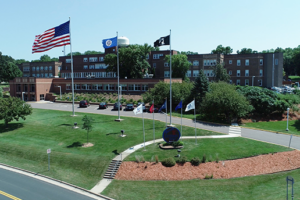Deferred maintenance is a multi-billion-dollar problem for public officials throughout the country. Deferred maintenance is a major issue in the U.S., affecting cities, counties, school districts, universities, community colleges, public hospitals and law enforcement agencies. The longer this issue remains unaddressed, the greater the financial burden on taxpayers.
The federal government also has deferred maintenance problems and finally, the funding is available to begin the slow and somewhat painful task of addressing the looming maintenance problems.
New initiatives to address deferred maintenance issues are now being launched and many public assets are already in various stages of repair, renovation or replacement. But the reform will stretch into many years.
Congress has made funding available, and other funding is being approved through bond elections, state coffers and public private partnerships, which bring private sector capital. As a result, many projects will be launched in 2024 and over the next several years. The majority of the initiatives will be large, complex and costly. Therefore, private sector collaboration will be in high demand.
The International Boundary and Water Commission (IBWC), a federal agency, handles binational border water issues. A $300 million grant from the Environmental Protection Agency (EPA) will allow the agency to handle some significant deferred maintenance issues. The plan is to do the repair work and then double the capacity of a federal wastewater plant in San Diego, California. A recent assessment revealed that $150 million will be needed to address deferred maintenance on the plant before the upgrades can even begin. The repair work will be extensive and no date for a project launch has been announced.
The University of South Florida received funding from the American Rescue Plan (ARPA), which will address deferred maintenance issues on the university campus. Like most higher education institutions, USF has numerous deferred maintenance issues and officials have announced that a Capital Renewal Program will outline priorities for addressing the deferred maintenance. A total of $72.8 million has been allocated for immediate projects – some small and others quite large. Approximately $28.9 million is earmarked to upgrade and enhance building systems. Another $26.5 million project will address campus utilities. Smaller projects will include new roofs, network modernization, construction maintenance, energy related equipment and roadway projects. A few smaller projects will launch near the end of 2023, but at least 28 more are slated to begin in the first quarter of 2024.
The Hastings Veteran’s Affairs Campus in Minnesota will address deferred maintenance issues by demolishing and replacing six buildings. There are currently a total of 20 structures on the campus. Facilities that are not replaced need immediate attention and a vast amount of repair and upgrades will be required. New pipes and HVAC systems are included as components of the project. A planned construction project to replace the administrative facility carries an anticipated cost of $221 million and the other construction effort has been tagged with a projected cost of $194 million. Five residential buildings will be demolished and replaced with one large housing facility designed to deliver upgraded apartments. The new facility will also be structured to provide space for residential mental and medical services. The design phase has not yet started, so construction will not launch until 2026.

The Hastings Veterans’ Home, which will receive major upgrades to address deferred maintenance issues. Courtesy of the Minnesota Department of Veterans Affairs.
Additionally, in Watsonville, California city leaders were awarded $10 million in a bond election so work could begin to address deferred maintenance problems. More funding will be required before the most significant issues are addressed but immediate projects will include work on the city’s roads, parks and the public library. Other initiatives will include constructing a new Nature Center, renovating and maintaining numerous city trails, upgrading roads and repairing streets to remove potholes. Consultants hired to prioritize projects say the final cost projection could be as high as $93 million. Construction is slated to begin in 2024.
The deferred maintenance reform will include every imaginable type of repair, renovation, and replacement project. Opportunities will not be hard to find at any state or jurisdictional government level. Demand for contractors will be extremely high – so high that there is concern about whether America’s workforce is robust enough to handle the demand.

As President and CEO of Strategic Partnerships, Inc., Mary Scott Nabers has decades of experience working in the public-private sector. A well-recognized expert in the P3 and government contracting fields, she is often asked to share her industry insights with top publications and through professional speaking engagements. Get an exclusive look at upcoming trends and insider tips from Mary herself on the SPI blog.
Tags: American Rescue Plan, ARPA, federal program, Government Contract Opportunities, government contracting, Hastings, Mary Scott Nabers, Minnesota, opportunities, Public Private Partnership, Strategic Partnerships, Texas, The International Boundary and Water Commission, The University of South Florida






 RSS Feed
RSS Feed